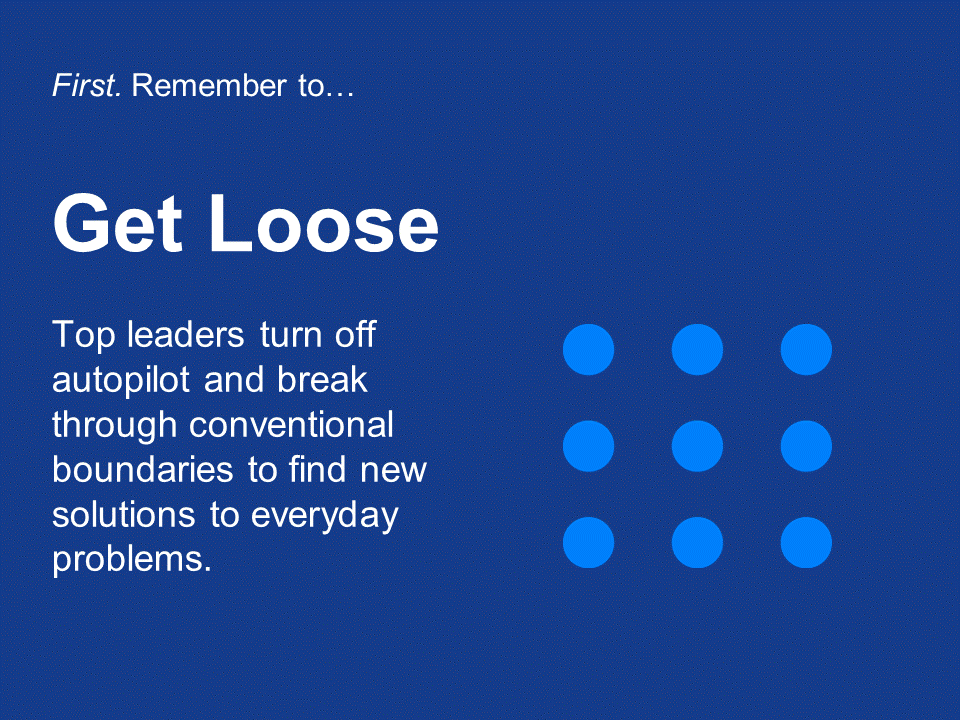 Most people find it is hard to connect all nine dots in the figure at left with four straight lines, without retracing any lines, and without lifting their writing implement.
Most people find it is hard to connect all nine dots in the figure at left with four straight lines, without retracing any lines, and without lifting their writing implement.
The reason it is hard to do is because in order to solve the puzzle a person has to think and operate in ways that are different than normal; or outside the box, as they say.
Before reading further, follow the instructions to solve the puzzle yourself; first with four lines, and then try to solve it using only three lines. Finally, try to determine how many ways the puzzle can be solved with only one line. Compare your answers with those you study or work with and explore together how the exercise relates to individual and organization performance and growth.
The nine-dot exercise dramatizes the effort it takes to break out of conventional ways of thinking and behaving to do things in new and different ways. Most of the time, most people operate in “auto-pilot mode”; seeing and doing the same things over and over and in the same way time after time: get up in the morning, commute to and from their office, work, prepare and eat meals, watch television, surf the Web, or interact with social media, and so on and so on.
While most of the time it may be just fine to live and work in auto-pilot mode, sometimes things go wrong. A good friend, for example, once missed the beginning of an important meeting because he followed his car’s GPS instructions and ended up at his home instead of where he needed to be because he had selected the wrong destination to start with and never once looked to see where he was actually going along the way!
It is important for a person, and for an organization, to step back every once in a while to look at things in a fresh light in order to see what is really there, and to discover opportunities to improve. In some cases, and eventually perhaps in most cases, doing so may become a matter of survival.
Some ways to help get loose:
- Get off the job site and clear of day-to-day pressures.
- Study how others, especially the best, do the same work.
- Bring in broad-gauged, early-career talent not yet exposed to the way things work today or new-hires experienced with how similar organizations work and ask them what questions and ideas about how things work occur to them.
- Assign leaders to study and reflect on parts of the organization other than those with which they are most familiar.
- Retain outside consultants from inside the industry to bring in best practices.
- Retain outside consultants from outside the industry to design the future from scratch.
- Ask leaders to brainstorm and to be open to new ideas; put the planning horizon far enough out into the future that the constraints of the present melt away.
- Set a good example by being aggressively interested in new ideas that come from inside and outside the organization and encourage team members to do the same.
- Convene a forum of the best and brightest from inside and outside the organization; have each review briefing materials about the organization today; ask those present to discuss the possibilities with no rules to constrain thinking.
- Act in accord with Seven Truths to Simply Change the World; click through all seven in this Prezi which ends with the four-line solution to the nine-dot puzzle.
To get in the right frame of mind to change the world, Get Loose and:
- Break through barriers,
- Adopt a fresh perspective,
- Challenge established paradigms, and possibly even
- Change the problem.
